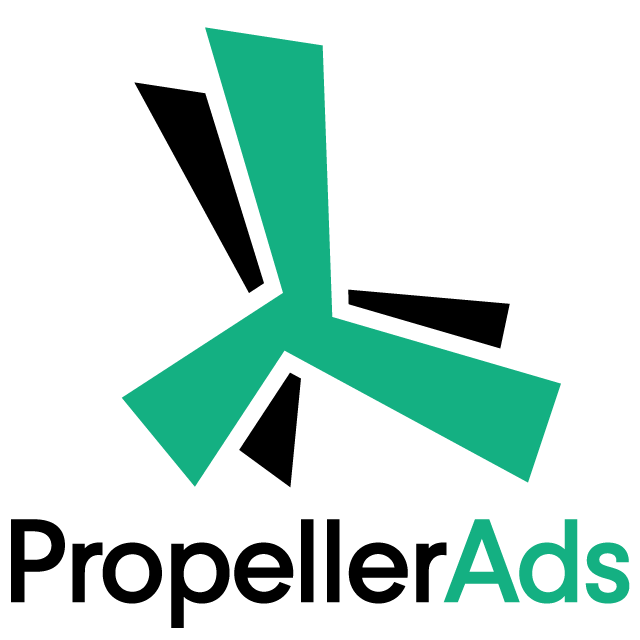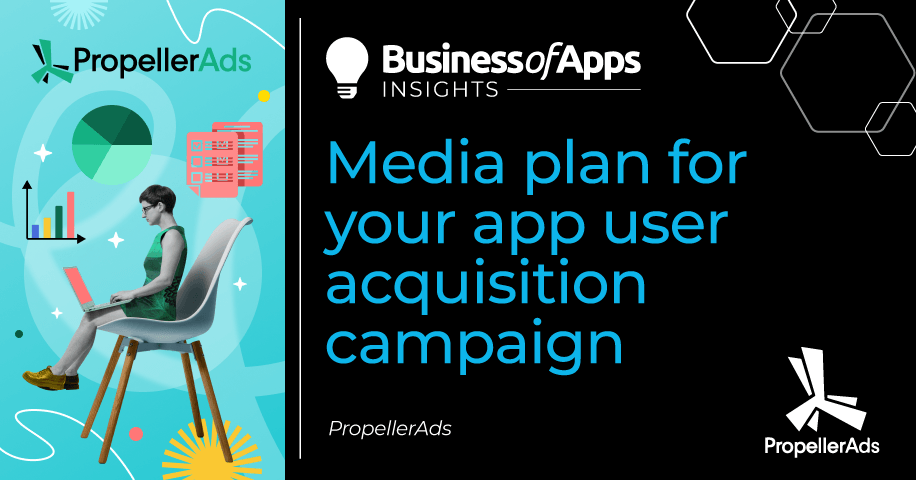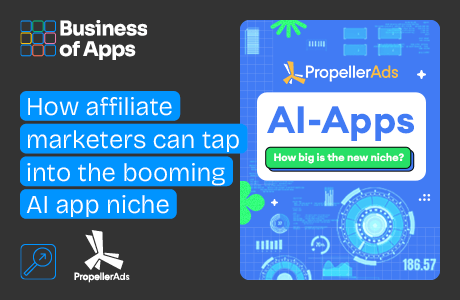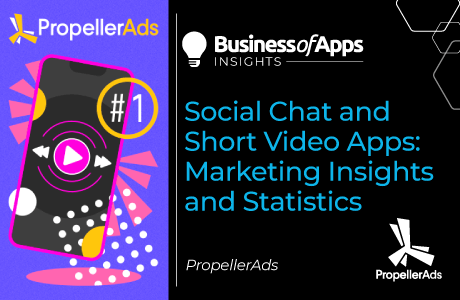Successful app marketing campaigns don’t happen by chance. They demand well-thought-out media plans.
Whether you’re rolling out a new app or strategizing to boost your existing reach, a media plan is your roadmap to achieving your marketing objectives efficiently and effectively.
You might have heard that before from experienced affiliate marketers—like those in our Telegram chat.
Why use a media plan?
A media plan helps you identify where your audience hangs out, the best channels to reach them, and how to allocate your budget for maximum impact. It helps you make informed decisions about connecting your app with its potential users without wasting resources on hit-or-miss tactics.
What is a media plan?
A media plan is a strategic document that outlines how to deliver ads, who the target audience is, and how to evaluate campaign effectiveness.
At a minimum, it includes:
- Your campaign goal: For example, a particular number of leads, brand awareness boost, or sales.
- Your target audience: The people you want to attract.
- Estimation of your campaign budget: The amount of money you will need to pay.
- Timing and frequency: How often your target audience will see your ads.
A completed media plan might look like a simple list of your goals:
Or it might be a more complicated and comprehensive spreadsheet where you or your team will track progress:
Ettore, an active participant in our Telegram chat and PropellerAds partner from Tappx describes his understanding of the media plan:
“A media plan is about the outcome you want from your campaign. That means thinking about its budget, whether the budget is realistic for your KPIs, and the platform you’re buying traffic from.”
Can I skip media planning?
You may be wondering if you can jump straight to more exciting things like testing creatives, optimizing campaigns, and making a profit.
We asked the professionals for their thoughts on this:
Ettore’s opinion is that you can skip media planning sometimes. However, that’s only possible if you’ve run a similar campaign with the same product before:
“If I’m very confident about what I’m going to do, I might skip the media plan. For example, when I work on an app that I already know, and I’m very aware of its best GEOs, top converting creatives, and customer acquisition strategies. But usually, especially if the product or a campaign is new for me, I do a media plan. It’s essential.”
Svetoslav, another PropellerAds partner, believes a media plan is a non-negotiable for everyone—and that you’ll get better at them with experience:
“Affiliate marketing has too many people today, and the competition is insanely high. Today, you need to pick what you’re going to do carefully, and this includes a really good media plan with your budgets, target audience, and all that. At least consider your budget: its planning can be narrowed down to just a couple of minutes when you get more experience with it. But that’s the basic key part everyone should do before starting anything.”
How to get started media planning
Perhaps you’ve started working on a new product, or you want to test a new strategy on an existing product. You might have questions like these top-of-mind:
- How do you get started on media planning?
- How do you define your budget?
- How do you choose the right target audience?
To answer those questions, we’ve prepared a step-by-step guide according to best practices and our experts’ advice.
Note: This guide implies you are running PropellerAds traffic, but you can apply it to any other ad network or source.
Set clear goals
Every successful campaign starts with a clear target. It’s not just about hoping for the best; it’s about knowing what ‘the best’ looks like for your app.
Are you aiming for a spike in downloads, a surge in user activity, or hitting a revenue milestone? Your goals should be as clear as the north star—guiding every decision you make.
For instance, if you’re a media buying agency, your client might set a goal like “Achieve 1,000 installs per month” or “Secure 500 installs and first deposits by April.”
However, it’s crucial to balance ambition with reality. After your initial research, you might discover these targets are more aspirational than attainable, given your current resources and market conditions. It’s okay to modify your goals to align with what’s realistically achievable.
Market research and budget planning
Understanding your app’s standing in various GEOs is your next big leap. Tools like SimilarWeb can shed light on which countries are bringing in the bulk of your desktop and mobile traffic. This insight is invaluable when planning where to focus your efforts and how to budget for them.
Armed with the top GEOs, you can visit the PropellerAds self-service platform for the Traffic Estimator tool. This will show you traffic volumes for specific GEOs and formats, giving you an idea of your required budget.
How Traffic Estimator works:
- You choose a GEO, a format, and an OS.
- The chart shows the total number of impressions based on the previous day’s activity and maximum and optimal CPM rates.
- This data allows you to count the approximate budget you will require to get the particular impressions number from the chosen GEO.
Remember, a well-informed budget is your campaign’s backbone, providing structure and direction. And while it’s tempting to dive deep into the data, don’t forget the human element. Tools like Google Trends can offer a broader perspective on your product’s potential popularity and reliability, adding another layer to your market research.
Our partner Ettore shares his opinion on Google Trends:
“I also use Google Trends sometimes, but not just for campaign purposes. It’s helpful when you encounter a new customer and need to check their products’ reliability and overall popularity. Besides, it may help estimate how popular a new product might become soon.”
Choose channels and audiences
Identifying where to purchase traffic and understanding the characteristics of this traffic are critical steps.
Let’s say your campaign is likely to appeal most to men aged 22-30. The question now is, how do you reach them effectively?
With PropellerAds as the traffic source, your Traffic Estimator research might point to the biggest volumes being with Popunder traffic. By conducting further research, you might then discover that Popunder and Push formats drive the most conversions among this audience.
Armed with this information, you’ll add it to your media plan.
But don’t just stop there. If you’re incorporating multiple traffic sources—like social media, influencer marketing, or any other channel—apply the same level of scrutiny to each. The goal is to ensure that every dollar is well spent towards reaching your ideal user.
Track and optimize your campaign
A media plan is not set in stone; it’s a living document that thrives on flexibility. If something isn’t working, be ready to pivot. For example, if you’ve allocated a budget based on broad geographic targeting and find your funds are spread too thin, it’s time to adjust.
Ettore gives a practical example on the topic:
“Let’s imagine you determined the budget on a very broad GEO—say the US or India, which, as we know, has a lot of traffic. Say you have a Cost-Per-Lead or Cost-Per-Install of $10, and you allocate $100 to make a test.
However, while testing, you notice that most of the placements you’re buying from have a very low spend—so low that your $100 is not representative enough for the traffic you can buy from the platform. In this case, you need to extend that budget to have a representative sample of your buying traffic. It often happens on very competitive or very large GEOs.”
This adaptability is crucial in-app marketing, where being able to respond quickly to performance data can make or break your campaign’s success. Your media planning gives you an overall vision of what you will do in the initial campaign stages but can be changed over time.
You can also add your testing and optimization strategies to your plan. This will be particularly useful if you are working with a team and your colleagues need to follow the same guidelines.
Extra tips for a winning media plan
We’ve collected four more tips to help you create a strong media plan and make your life much easier.
Name campaigns properly
Establishing easily recognizable naming conventions is a quick win when it comes to managing a large number of campaigns. As Svetoslav puts it:
“A big part of my media planning is having campaign names that I’ll easily understand.”
For example, avoid names like this:
| Campaign11239_image_2432 |
| Campaign qweqwe |
| Campaign_survey_exit |
And try this, instead:
| PropellerAds_Golden.Goose_FinanceApp_74644_Light_Pop_Android_Chrome_EN |
| PropellerAds_Golden.Goose_FinanceApp_74644_Light_Pop_Android_Chrome_EN |
| PropellerAds_Golden.Goose_FinanceApp_74644_Light_SE_Android_Chrome_EN |
The principle is to add the traffic source, the offer source, the vertical, the offer ID, and a landing type—and then arrange target audience details in order of segmentation.
You can customize it in whatever way works best for you—the point is to spend a few minutes on the right naming conventions to save time on campaign filtering later.
For example, if you want to check all your Chrome campaigns, you will sort your tracker by Chrome and see all of them. The same is true when you want to track a particular offer, GEO, language, etc.
Collect and use the data
You don’t need to build every media plan from scratch. You have data from your previous campaigns—or will have it later if you are a beginner. Don’t neglect this data!
For example, Ettore’s team buys traffic from their ready Whitelists—proven and checked – and includes this in their media planning, too.
Stay informed
SimilarWeb and other tools will help you with your research, but you shouldn’t stop there. The experienced media buyers we spoke with recommended learning more about offers from advertisers, CPAs, or ad network managers.
On top of that, check the market dynamics in your chosen GEOs. They will have a great impact on your media plan.
Svetoslav gives an example on this topic:
“Let’s say, for example, there’s a flood in Haiti. In this case, people would hardly like being promoted iPhone giveaways. Probably a bad example, but you get the idea, right?”
Wait for the weekend
Did you know that Fridays, Saturdays, and Sundays are the busiest days for affiliate marketers and media buyers?
If a campaign doesn’t convert well on Monday, you might get better results on Friday afternoon. People have more free time, meaning they have more attention to give your offers.
If the weekend hack didn’t work out, look at your campaign more critically: maybe the offer is poor quality, the source doesn’t fit the offer, or your budget is too small.
Don’t get addicted to the numbers
Your media plan can include how often you check your campaign results and compare them with your goals. Usually, this range varies from twice to three times a day to once in a couple of days.
Here is what Svetoslav thinks about it:
“Some people keep checking the statistics every five minutes: ‘Hey, what’s going on? What’s going on?’ Like they don’t have anything better to do! Well, that could be useful if you operate with very, very large budgets. But if yours is like just a couple of hundred bucks, don’t be a statistics junkie. It could be dangerous for your health.”
Your media plan is your blueprint
Consider your media plan as a flexible blueprint for success.
It’s designed to guide you, outlining your strategies and goals, yet it’s adaptable, allowing for adjustments based on actual results. Adaptability is key because success in app marketing requires a balance between following a well-thought-out plan and being agile enough to pivot when necessary.
Whether you’re refining your audience targeting, experimenting with new ad formats, or optimizing campaign budgets, your media plan is the foundation for your app marketing success. Let it guide you, but be prepared to redraw the lines as you move toward achieving your goals.
















